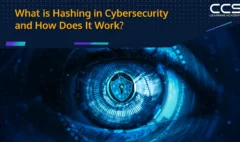What is Cloning in Cyber Security? Definition, Risks & Prevention
The term “cloning” encompasses more than copying when it comes to cybersecurity. It involves mimicking aspects to avoid detection. This deceptive practice leads to an increase in security risks within cyberspace including clone phishing and network cloning.
According to a recent study, phishing attacks are the most common type of cybersecurity breaches.
By exploiting cloning technology, unauthorized activities such as breaching security protocols, stealing data or gaining control over systems can occur.
Table of Contents
Understanding Cloning in the Cybersecurity Context
Cloning plays a role in cybersecurity extending beyond data duplication. It involves replicating devices, software or identities with the intention of deceiving systems or individuals.
This deceptive practice opens the door to cyber attacks like clone phishing and network cloning. Cloning can be employed to bypass security measures, steal information or even gain control over entire systems.
Card cloning, also known as card skimming, is the replication of a card’s information with the intention of committing fraud. According to the FBI, skimming costs financial institutions and consumers more than $1 billion each year.
Examples of Cloning Attacks: Clone Phishing and Network Cloning
- Clone Phishing: In this attack perpetrators create a replica of an email that appears genuine with logos and links. They then send this cloned email to recipients tricking them into divulging information or downloading malicious attachments.
- Network Cloning: Attackers employ network cloning by copying a network’s configuration to create a duplicate under their control. This cloned network can be utilized for monitoring traffic intercepting data or launching attacks.
Different Types of Cloning in Cyber Security
Device Cloning:
The replication of devices has emerged as a growing concern in today’s landscape. Malicious actors can assume disguises. Take command of devices by duplicating their identifiers. Failing to prevent access to systems poses security risks such as privacy violations and loss of confidentiality.
Software Cloning:
Forking and Code Duplication Software cloning, which involves copying or modifying code can be considered a violation of copyright laws. Such behavior can lead to usage or the creation of software versions. Additionally it poses a risk to users who may unknowingly install these counterfeit programs.
Identity Cloning:
Impersonating Individuals or Organization, Identity cloning refers to the act of assuming someone Identity with malicious intent such as fraud or unauthorized access to systems.
This can involve tactics like stealing information fabricating false profiles or even pretending to represent legitimate organizations. The repercussions of identity cloning are far reaching and severe including harm, damage, to one’s reputation and potential legal consequences.
Common Techniques (Process & Tools) Used in Cloning
In the intricate world of cybersecurity, device cloning stands as a prominent threat, manifesting in various forms. These techniques allow attackers to impersonate or control devices, leading to unauthorized access and potential breaches.
Here’s a closer look at some of the key methods:
- MAC Spoofing: This technique involves changing the Media Access Control (MAC) address of a device to imitate another device. By doing so, attackers can gain access to networks or evade tracking and monitoring systems.
- IMEI Cloning: The International Mobile Equipment Identity (IMEI) is an identifier for devices. Cloning the IMEI allows attackers to create a device potentially enabling them to intercept calls, messages and data.
- SIM Cloning: SIM cloning involves creating a replica of a SIM card. This cloned SIM can be used to intercept communications, make calls or engage in fraudulent activities.
Software Cloning Techniques
- Reverse Engineering: This process involves analyzing software to understand its structure and functionality. Attackers can use engineering to create cloned or modified versions of the software.
- Decompiling: Decompiling is the process of translating machine code into a format that humans can read and understand easily. This method is often employed to analyze and clone software, which may result in copyright infringement or malicious alterations.
- Repackaging: Repackaging refers to modifying and redistributing software with intentions. Cloned or repackaged software may contain malware or other security threats.
Identity Cloning Techniques
- Phishing: Phishing attacks are about tricking people into giving away information often through fake emails or websites. The purpose behind this is to pretend to be the victim and use their identity for purposes.
- Spoofing: Impersonating an entity like an email sender or website falls under spoofing. This can be used to deceive recipients or visitors leading to access or fraudulent activities.
- Social Engineering: Social engineering relies on manipulation to fool individuals into revealing information. This can work hand in hand with cloning techniques to impersonate people or organizations.
Website Cloning Techniques
- Reverse Engineering and Code Duplication: Attackers can analyze and duplicate website code in order to create a copycat site. This cloned site is then used to deceive visitors, steal information or distribute malware.
- Content. Reproduction: Content scraping involves automatically extracting information from websites. Attackers use this scraped content to create cloned sites that appear genuine but are actually controlled by them.
- Content Management System (CMS) Cloning: Some attackers employ tools that allow them to clone websites built on CMS platforms. These cloned sites serve as channels for phishing attempts, fraud or other malicious activities.
Risks and Consequences
In the realm of cybersecurity, the risks associated with cloning are far-reaching and multifaceted. From unauthorized access to financial fraud, the consequences of cloning can be severe and damaging.
Here’s an overview of some of the primary risks:
- Unauthorized System and Network Entry: Cloning can empower actors to bypass security measures and gain access to systems and networks resulting in data breaches and other harmful activities.
- Data Breaches and Invasion of Privacy: Cloned identities or devices can be utilized for the purpose of stealing information leading to data breaches and privacy infringements. Personal, financial or corporate data may be compromised.
- Fraudulent Activities and Financial Losses: Cloning can facilitate forms of activities, such as credit card fraud, identity theft or corporate espionage. These actions can result in losses for individuals and organizations.
The Role of Cloning in Cyber-attacks
Attackers leverage cloning, as a tool to deceive, manipulate and exploit vulnerabilities. The use of cloning plays a complex role, in cyber attacks whether it involves cloning a device to intercept communications or cloning an email for phishing purposes.
Let’s explore some real life examples of cyber attacks that involve cloning;
Examples of Real-Life Cyber-attacks Involving Cloning
- Spear phishing campaigns often employ cloned emails specifically targeting individuals or organizations.
- Cybercriminals create cloned websites that closely resemble banking sites leading to financial fraud.
- Hidden malware is often distributed through software, which infects users’ systems.
Strategies Used by Cybercriminals to Evade Detection
- They employ cloning techniques to mimic entities making it more challenging to detect their activities.
- These criminals constantly. Evolve their cloning methods to stay ahead of security measures and detection tools.
- They combine cloning with attack vectors to create multifaceted cyber attacks.
Preventative Measures and Best Practices
In the ongoing battle against cloning and other cybersecurity threats, adopting proactive and vigilant practices is essential.
Here are some fundamental steps that individuals and organizations can take to enhance their security posture:
- Regularly update software and security systems to ensure they have the protections in place.
- Exercise caution when dealing with emails and links from sources.
- Utilize multi factor authentication as a layer of security against access.
Advanced Protections and Strategies to Counter Cloning
To enhance safeguarding, against cloning attacks it is advisable to incorporate the following measures
- Implement security solutions such as intrusion detection systems and threat intelligence platforms.
- Collaborate closely with cybersecurity experts who can assess your vulnerabilities and implement customized security measures.
- Educate both employees and users, about the risks associated with cloning fostering a culture of awareness within your organization.
Recognize the role played by cybersecurity professionals and services in identifying, mitigating and preventing cloning attacks. Their expertise allows them to develop tailored security strategies that effectively tackle the risks posed by cloning.
By implementing these strategies you can significantly bolster your defense against cloning attacks while promoting an environment for your organization.
Cloning vs. Phishing: Understanding the Difference
It’s crucial to grasp the distinction between cloning and phishing because they are both techniques employed in cyber attacks. They are not identical. Cloning involves making copies of devices, software or identities whereas phishing centers around deceiving people into revealing information.
Cloning can be employed in phishing attacks such as clone phishing, where genuine emails are replicated to trick recipients. Hence it is vital to differentiate between these two concepts, for cybersecurity measures.
The Importance of Cyber Security for Organizations
In today’s world cybersecurity holds importance for businesses going beyond technicalities. Among the cyber threats, cloning can pose consequences for organizations. It can lead to losses and significant harm to a company’s reputation. Therefore organizations should prioritize cybersecurity. Take measures to understand and mitigate the risks associated with cloning. This will help safeguard their assets, customers and overall reputation.
Tips for Protecting Your Business from Cloning Attacks
- Implement Robust Security Measures: Make use of firewalls, encryption techniques and other robust security tools to fortify your defenses against cloning attempts.
- Educate Employees:Regularly provide training sessions on the risks posed by cloning and how to prevent it. This will empower your employees to identify threats and respond effectively.
- Monitor and Respond: Continuous monitoring and a well-defined incident response plan can help detect and mitigate cloning attacks promptly.
Responding to Cloning Attacks: Incident Response and Recovery
In the event of a cloning attack it is crucial to respond efficiently. Organizations should have an incident response plan that encompasses the steps:
- Identification and Assessment: Quickly identify the nature and scope of the attack.
- Containment and Eradication: Isolate affected systems and remove malicious elements.
- Recovery and Restoration: Restore affected systems and implement additional security measures to prevent future attacks.
- Reporting and Compliance: Comply with legal and regulatory requirements, including notifying affected parties if necessary.
Key Takeaways
- Understanding Cloning: In cybersecurity cloning refers to creating duplicates of devices, software or identities for purposes. It is an issue with forms and techniques involved.
- Risks and Consequences: Cloning poses significant threats such as unauthorized access, data breaches, fraudulent activities, as well as financial losses. Real world incidents demonstrate risks associated with it.
- Cloning vs. Phishing: Although related concepts cloning involves replication while phishing centers around deception strategies.Both cloning and cyber threats necessitate a comprehension and set of strategies to address them effectively.
- Preventative Measures: Safeguarding against cloning requires a combination of security measures, ongoing monitoring, educating employees and collaborating with cybersecurity professionals.
- Responding to Attacks: In the event of a cloning attack having a defined incident response plan is crucial. Swiftly identifying the attack containing its impact, recovering from any damage caused and ensuring compliance are steps in the response process.
- Importance of Cybersecurity for Organizations: Cloning attacks, along with cyber threats highlight the role that cybersecurity plays in safeguarding assets customers trust and maintaining a positive reputation. In today’s era it has become an aspect for businesses.
- Tips for Protection: Implementing security measures effectively across all levels of the organization educating employees about threats and best practices to counter them actively monitoring for any signs of compromise or intrusion attempts and having a response plan are essential tips to protect businesses against cloning attacks.
- Ongoing Vigilance: As cloning threats continually evolve and adapt over time it is vital to maintain vigilance. This requires staying proactive by collaborating with cybersecurity experts and continuously educating oneself about emerging risks.
Cloning in the realm of cybersecurity is an issue that presents risks to both individuals and organizations alike. The range of threats varies from device cloning to identity impersonation; they continue to evolve at a pace.
Understanding the concept of cloning comprehensively while implementing security measures are measures, in effectively shielding against such malicious activities.
The significance of cybersecurity professionals, ongoing education and a proactive security approach cannot be overstated in the battle against cloning and other cyber threats.
Take the Next Step in Cybersecurity Today!
Understanding and combating cloning in cybersecurity is a complex but essential task. Whether you’re an individual looking to protect your personal information or an organization aiming to safeguard your business, education and action are key.
Understanding and combating cloning in the realm of cybersecurity is an undertaking. Whether you are an individual seeking to safeguard your information or an organization aiming to protect your business, education and action play a role.
If you are ready to elevate your understanding of cybersecurity consider enrolling in the acclaimed CISSP Certified Information Systems Security Professional course. This comprehensive training program equips participants with the skills and insights to confront the evolving challenges posed by cloning and other cyber threats.
For organizations desiring to strengthen their cybersecurity strategy we offer tailored Enterprise Training Solutions that meet your needs. These solutions provide safeguards and strategies to effectively counteract cloning attempts while ensuring the security and integrity of your business.
Don’t wait until it’s too late. Invest in your cybersecurity education and protection today; stay one step ahead of cloning risks and other cyber dangers.
1. How does cloning differ from copying or duplication?
Cloning goes beyond simple copying or duplication. It involves replicating entities with the intent of deceiving systems or individuals, often leading to unauthorized access, data breaches, and other security risks.
2. What are some examples of cloning attacks?
Cloning attacks include techniques like clone phishing and network cloning. Clone phishing involves sending fake emails that appear genuine, while network cloning copies a network’s configuration to create a duplicate for malicious purposes.
3. How can attackers use cloning to evade detection?
Attackers can use cloning techniques to mimic legitimate entities, making it challenging to detect their activities. They constantly evolve their cloning methods to stay ahead of security measures and detection tools, making it harder to identify their malicious actions.
4. What are some preventative measures to protect against cloning attacks?
Preventative measures include regularly updating software and security systems, exercising caution with emails and links, using multi-factor authentication, implementing intrusion detection systems, collaborating with cybersecurity experts, and educating employees about cloning risks.
5. How can organizations respond to cloning attacks?
Organizations should have a well-defined incident response plan that includes steps such as identifying and assessing the attack, containing and eradicating the threat, recovering and restoring affected systems, and reporting and complying with legal and regulatory requirements.
6. What is the intersection between cloning and phishing?
While cloning and phishing are distinct techniques, they can intersect in certain attacks. Clone phishing, for example, involves replicating genuine emails to deceive recipients, showcasing how these techniques can be combined for more sophisticated cyber attacks.







